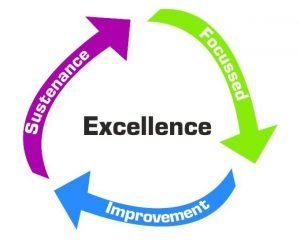In today’s rapid-paced and aggressive enterprise world, efficiency isn’t just an advantage — it’s a necessity. Whether you’re in manufacturing, offerings, or consulting, Lean thinking gives a dependent yet flexible method to streamline operations, decorate quality, and supply extra cost to clients.
But before you dive deep into complex Lean strategies, it’s vital to recognize the fundamentals — the fundamental ideas and the gear that shape the muse of Lean philosophy.

🧭 What Is Lean?
Lean is a continuous improvement philosophy that pursuits to maximise purchaser price at the same time as minimizing waste. Originating from the Toyota Production System (TPS), Lean focuses on enhancing glide, removing non–price-introduced activities, and empowering human beings in any respect to solve issues and drive improvement.
In simple phrases — Lean method doing more with much less — less time, less area, much less effort, and less sources at the same time as achieving greater patron satisfaction and better best.
⚙️ The 5 Key Principles of Lean
Every Lean transformation is guided by 5 middle principles. Understanding these helps groups align their methods and subculture for sustainable success.
-
Define Value
Identify what your client simply values and is inclined to pay for. Everything else is waste.
-
Map the Value Stream
Visualize all the steps (each value-added and non-fee-brought) in your technique to see wherein waste exists.
-
Create Flow
Once waste is eliminated, make sure that the remaining steps drift easily with out interruptions or delays.
-
Establish Pull
Produce only what the client wishes — once they want it — instead of pushing paintings no matter demand.
-
Pursue Perfection
Lean is a journey, no longer a destination. Continuous improvement (Kaizen) guarantees that tactics evolve and enhance over time.
🚮 The 7 Types of Waste (Muda)
One of the core Lean tools is identifying and eliminating waste, known as “Muda” in Japanese. Waste refers to any activity that consumes resources but does not add value from the customer’s perspective.
Here are the 7 classic types of waste:
-
Overproduction
Producing more than needed or earlier than required.
Example: Manufacturing extra stock “just in case” that ends up unused. -
Waiting
Idle time when people, machines, or materials are waiting for the next step.
Example: Operators waiting for raw materials or approvals. -
Transportation
Unnecessary movement of products or materials between locations.
Example: Moving components back and forth across the facility. -
Overprocessing
Doing more work than necessary or using overly complex processes.
Example: Using higher precision equipment when it’s not required. -
Inventory
Excess raw material, work-in-progress (WIP), or finished goods.
Example: Stockpiling materials that tie up capital and storage space. -
Motion
Unnecessary movement by people, such as searching for tools or walking long distances.
Example: Employees walking across the shop floor repeatedly due to poor layout. -
Defects
Errors or rework that require additional time, materials, and effort to correct.
Example: Faulty products needing rework or scrapping.
💡 Tip: A simple way to remember them is “TIMWOOD” – Transportation, Inventory, Motion, Waiting, Overproduction, Overprocessing, and Defects.
🔍 Final Thoughts
Mastering the fundamentals of Lean — particularly expertise and doing away with the 7 varieties of waste — is the first step closer to constructing a way of life of excellence. When combined with the right gear and a dedication to development, Lean turns into an effective force for organizational growth and sustainability.
Start small, stay constant, and consider — Lean is ready development, not perfection.






